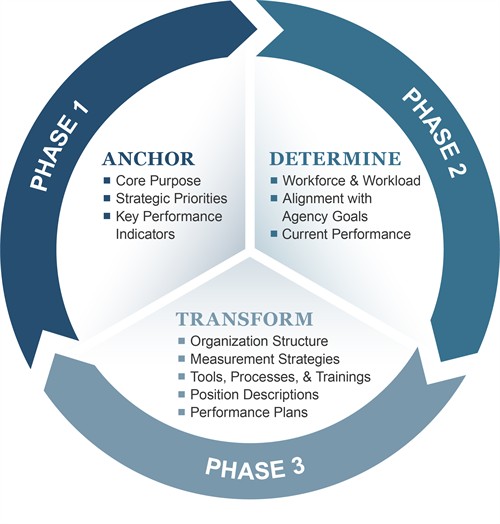Are you striving to boost your company’s efficiency and decision-making prowess? Corporate Performance Management (CPM) could be your answer.
Imagine a streamlined process where your business goals are consistently met, and your team is always aligned. Sounds ideal, right? CPM is not just about crunching numbers; it’s about transforming data into actionable insights that drive success. As you delve deeper into this article, you’ll discover how CPM can revolutionize your company’s operations, enhance productivity, and secure a competitive edge.
Don’t miss out on unlocking your business’s full potential—read on to explore the power of Corporate Performance Management.
Table of Contents
ToggleThe Basics of Corporate Performance Management
Corporate Performance Management (CPM) is vital for business success. It includes methods to monitor and manage a company’s performance. CPM ensures that goals align with strategic objectives. Understanding its basics helps businesses operate efficiently.
Key Concepts
CPM involves several key concepts. One is goal alignment. Goals must align with the company’s overall strategy. Another is data integration. Businesses need accurate data for informed decisions. Performance measurement is also crucial. It helps track progress towards targets. Finally, reporting and analysis are important. They provide insights into business operations.
Importance in Business Strategy
CPM plays a significant role in business strategy. It helps companies set realistic goals. Businesses can measure their progress accurately. CPM supports decision-making with reliable data. It ensures resources are used efficiently. This leads to better financial performance. Companies can adapt quickly to market changes.
Credit: www.scnsoft.com
Components of Performance Management Systems
Corporate Performance Management Systems are vital for business success. They help organizations achieve strategic goals efficiently. Understanding their components is crucial. These systems include financial planning, budgeting, and performance tools. Each part plays a unique role. Let’s delve into these components.
Financial Planning and Analysis
Financial planning guides business decisions. It ensures resources are allocated effectively. Proper analysis helps predict future trends. It supports strategic planning with data-driven insights. This component is crucial for long-term success. It keeps companies prepared for financial challenges.
Budgeting and Forecasting
Budgeting controls spending. Forecasting predicts future financial conditions. Together, they provide stability and direction. They help manage resources wisely. Accurate forecasting aids in setting realistic goals. Budgeting ensures funds are used efficiently. This minimizes risks and maximizes profits.
Performance Measurement Tools
Performance tools track progress. They provide actionable insights. These tools evaluate employee and process efficiency. They highlight areas needing improvement. Regular measurement leads to better outcomes. These tools are essential for continuous growth. They align operations with strategic objectives.
Implementing Performance Management
Implementing performance management enhances corporate strategies by aligning employee goals with business objectives. It boosts productivity through regular feedback and clear expectations. This process ensures continuous improvement, fostering a proactive work environment.
Implementing performance management in a corporate setting is like laying the foundation for a skyscraper. It requires precision, planning, and a clear vision. This process ensures that every employee’s efforts align with the company’s goals. But how do you make this a reality in your organization? The journey isn’t always straightforward, and understanding the steps and potential hurdles can make all the difference.
Steps for Successful Implementation
Before you dive in, ensure everyone understands the purpose and benefits of performance management. Communication is key; hold meetings and workshops to clarify goals. Create a detailed plan. Outline each step, from setting objectives to evaluating results. It’s like mapping out a road trip: you need to know your destination and the best route to get there. Develop a robust system for tracking progress. Use software or tools that provide real-time updates. This keeps everyone accountable and informed. A transparent system builds trust and motivation among employees. Regular feedback sessions are vital. They offer a chance for growth and improvement. Think of it as a two-way street where both parties learn and adapt.
Common Challenges and Solutions
Implementing performance management isn’t without its hurdles. One common issue is resistance to change. Employees might fear the unknown or feel overwhelmed. Address these concerns directly. Share stories of past successes and offer training sessions to ease the transition. Another challenge is inconsistency in evaluations. Without clear criteria, assessments can seem biased. Develop standardized metrics that everyone understands. This ensures fairness and clarity. Time constraints can also pose problems. Busy schedules make it hard to prioritize performance management. To tackle this, integrate it into daily routines. Brief check-ins and regular updates keep it top-of-mind without being a burden. Ask yourself: are you ready to lead your team towards success? With the right approach, performance management can transform your organization, aligning individual goals with corporate vision. Are you prepared to take this crucial step?
Technology in Performance Management
In today’s rapidly changing business world, technology plays a crucial role in shaping Corporate Performance Management (CPM). By integrating technology, companies can streamline processes, enhance decision-making, and achieve better results. Have you ever thought about how software and analytics can transform your company’s performance management? Let’s dive into how technology can be your game-changer.
Role of Software Solutions
Software solutions are the backbone of modern performance management. They help automate repetitive tasks, freeing up your time for strategic planning. Imagine having a system that updates financial data in real-time and alerts you to discrepancies instantly. This reduces errors and improves accuracy.
Platforms like SAP or Oracle offer customizable dashboards that give you a bird’s-eye view of your company’s performance metrics. You can easily track KPIs and make informed decisions. Wouldn’t it be great to have all your data in one place, accessible with just a click?
Data Analytics and Business Intelligence
Data analytics turn raw data into actionable insights. By analyzing trends and patterns, you can predict future outcomes and adjust your strategies accordingly. Consider how Amazon uses data analytics to recommend products based on your previous searches and purchases.
Business Intelligence (BI) tools such as Tableau or Power BI help visualize complex data through interactive charts and graphs. These tools allow you to spot opportunities and challenges quickly. Could your business benefit from seeing a clearer picture of where you stand in the market?
As you explore the impact of technology on performance management, think about how it can help your organization grow and adapt. Are you ready to embrace the technological advancements that can elevate your company’s performance to new heights?
Benefits of Effective Performance Management
Effective performance management plays a vital role in corporate success. It helps organizations achieve their goals by streamlining processes. The benefits go beyond just measuring performance. They include better decision-making, improved alignment, and increased accountability.
Enhanced Decision Making
With accurate data, leaders make informed choices quickly. This reduces guesswork and uncertainty. Data-driven decisions lead to better outcomes. They also help in identifying opportunities and challenges early. This proactive approach ensures a competitive edge.
Improved Organizational Alignment
Alignment ensures everyone works towards common goals. Effective performance management clarifies these goals. It aligns individual performance with organizational objectives. This creates a unified direction. Teams work more efficiently when goals are clear and shared.
Increased Accountability
Accountability drives responsibility and ownership. Performance management establishes clear expectations. Employees understand their roles better. This clarity fosters a culture of accountability. Regular feedback ensures progress and accountability.
Trends in Performance Management
Corporate Performance Management is evolving rapidly. Businesses seek efficient strategies to stay competitive. Performance management trends shape how organizations measure success today. Understanding these trends is crucial for adapting to changes.
Integration with Agile Practices
Agile practices are transforming performance management. They promote flexibility and responsiveness. Teams can adjust goals quickly. This integration enhances collaboration among departments. It fosters a culture of continuous improvement. Agile practices drive faster decision-making. It helps businesses respond to market changes effectively.
Focus on Real-time Data
Real-time data is a key trend in performance management. It provides instant insights into operations. Managers make informed decisions faster. Access to current data improves strategy execution. Real-time data minimizes delays in response. It enhances transparency within the organization. Businesses can identify issues and opportunities promptly.
Case Studies and Success Stories
Corporate Performance Management (CPM) is essential for business success. It helps organizations align strategies and boost performance. The real value of CPM is evident in case studies and success stories. These examples from leading corporations offer insights and inspiration. They show how effective CPM can transform business operations and outcomes.
Examples from Leading Corporations
Several top companies have mastered CPM for remarkable results. A global tech company enhanced its decision-making processes. They used CPM tools to analyze data quickly. This improved their market response times significantly. A retail giant streamlined its operations with CPM. It reduced costs and increased efficiency across its supply chain.
Another example is a financial institution that improved customer satisfaction. They used CPM to tailor services based on client feedback. These stories highlight how CPM can drive growth and customer loyalty.
Lessons Learned
From these case studies, key lessons emerge. First, clear goals are vital. Companies must define what they want to achieve with CPM. Second, technology plays a crucial role. Choosing the right CPM tools is critical for success.
Third, collaboration is essential. Teams must work together to implement and utilize CPM effectively. Lastly, continuous improvement is necessary. Regular reviews and updates ensure CPM remains aligned with business needs. These lessons provide a roadmap for successful CPM implementation.

Credit: www.opm.gov
Frequently Asked Questions
What Is a Corporate Performance Management System?
A corporate performance management system analyzes and optimizes business performance. It helps align strategies with goals, measure success, and improve decision-making. The system integrates data, tracks metrics, and generates reports to enhance efficiency and achieve objectives. It’s essential for strategic planning and improving overall organizational performance.
What Are the 5 Elements of Performance Management?
The five elements of performance management include goal setting, continuous feedback, employee development, performance evaluation, and rewards/recognition. These elements ensure effective performance tracking and improvement. Clear objectives and regular feedback drive employee growth and motivation. Evaluation and rewards enhance productivity and satisfaction.
What Is the Difference Between CPM and EPM?
CPM stands for Cost Per Mille, indicating ad cost per 1,000 impressions. EPM means Earnings Per Mille, showing revenue earned per 1,000 impressions. CPM is for advertisers, while EPM is for publishers. Both metrics help assess ad performance and profitability.
What Are the 5 C’s of Performance Management?
The 5 C’s of performance management are Clarity, Communication, Consistency, Coaching, and Consequences. Clarity defines roles and expectations. Communication ensures open dialogue. Consistency maintains standards. Coaching provides guidance and support. Consequences reinforce accountability. These elements create a structured approach to improve employee performance and organizational success.
Conclusion
Corporate performance management helps businesses meet their goals efficiently. It improves decision-making with accurate data insights. Teams work better with clear objectives and strategies. Regular performance assessments lead to continuous improvement. Companies stay competitive and adapt to market changes. Better resource allocation boosts productivity and profitability.
By focusing on key metrics, businesses can manage risks effectively. A strong performance management system ensures sustainable growth. Success comes from aligning efforts with organizational vision. Embrace performance management to drive positive change. Keep refining processes for optimal results. Achieving corporate goals becomes manageable and realistic.




